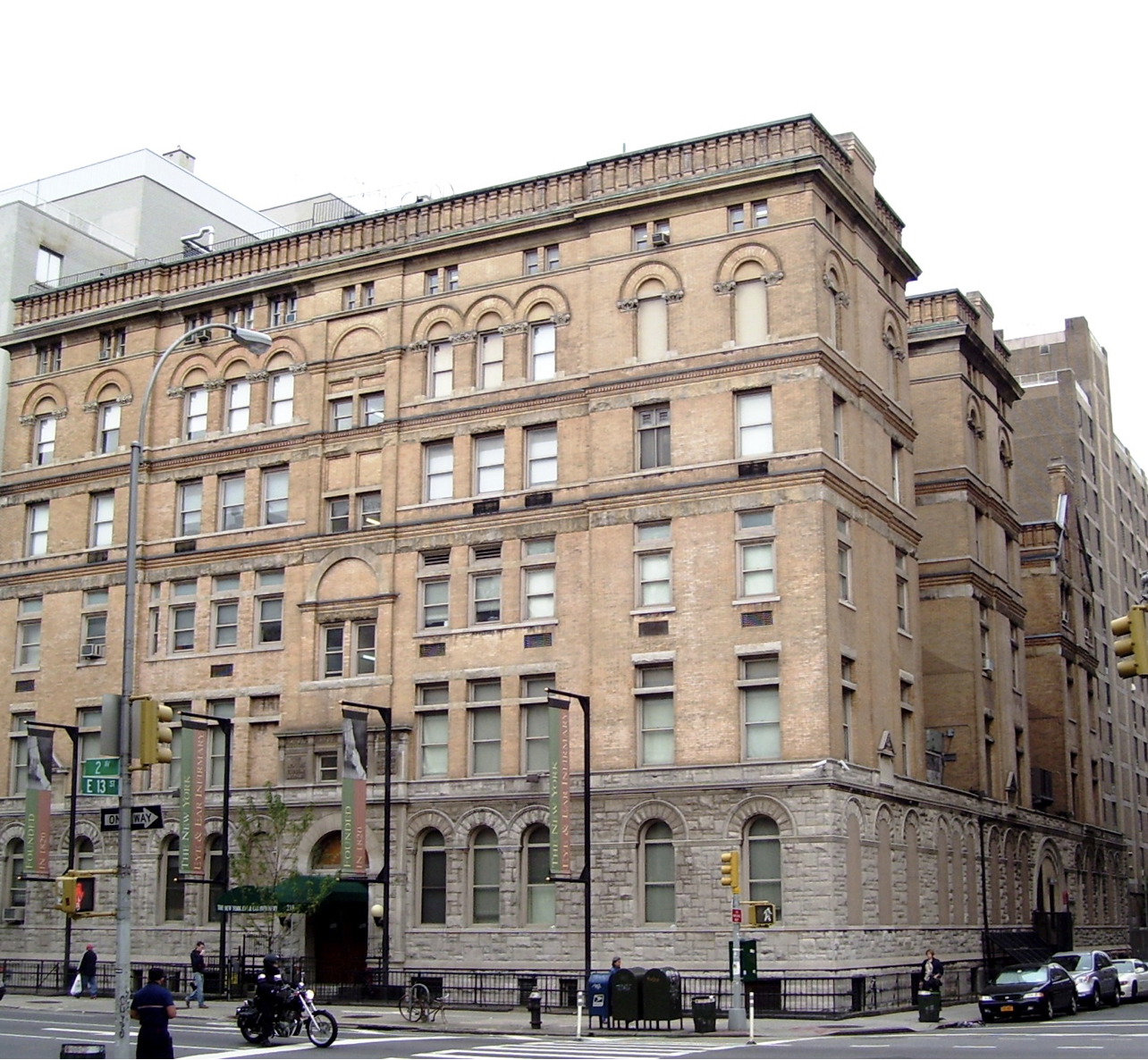
The New York Eye and Ear Infirmary
New York is perhaps the most diverse city in the world. Few places on Earth can claim to be home to so many sites of important contributions to the history of groups as varied as African Americans, Latinos, women, LGBTQ+ people, and the disabled community, to name just a few.
But too few of our city’s officially designated landmarks reflect that wonderfully rich and diverse history, though preservationists and communities across the city have been laboring hard to change that. The City, however, has been slow to act — particularly when sites are endangered.
One need look no further than 14th Street, one of New York’s defining thoroughfares, for evidence. On and just off what was once called “the poor man’s Fifth Avenue” are an incredible array of sites connected to these multifaceted histories New York embodies. Several are imminently endangered, and all are awaiting action by the City to recognize and preserve that precious history.
Starting from the west, the former Our Lady of Guadalupe Church at 229 West 14th Street was the very first New York church established for a Spanish-speaking congregation. Originally serving Spaniards, Mexicans, Puerto Ricans, and other Latin Americans, the church’s congregation grew over the years as did New York’s Hispanic population — now encompassing about 30% of all New Yorkers. But less than a handful of New York City’s thousands of designated landmarks reflect the history of our rich and varied Latino community. The church has been closed, and may soon be sold for development.
Just east at 50 West 13th Street sits the Jacob Day house, once the home and place of business of one of 19th century New York’s most prominent and successful Black businessmen. Day was also a leading crusader for reform of New York’s racist voting laws (which placed unequal property requirements upon Black New Yorkers), and a prominent abolitionist whom evidence indicates helped the Underground Railroad. The recent death of a longtime owner who had pledged to preserve the house leaves its fate very much in doubt.
Footsteps away at 80 Fifth Avenue and 14th Street sits the former headquarters of the very first national LGBTQ+ rights organization in the country, then known as the National Gay Task Force. From there, between 1973 and 1986 the Task Force got the first national gay rights legislation introduced, homosexuality removed from the list of mental disorders, the ban on gay people working for the federal government lifted, and the first White House meeting for an LGBTQ+ group, all while combating HIV/AIDS, anti-LGBTQ+ violence, and workplace discrimination.
Across Fifth Avenue at 10 West 14th Street stands the former headquarters of the NYC Woman Suffrage League. Beginning 130 years ago, multiple campaigns were led here to extend the franchise to New York’s women. That decades-long struggle finally succeeded in 1917, just three years before the 19th Amendment made it the law of the land nationwide.
And just a bit further east at 218 Second Avenue/301 East 13th Street sits the New York Eye and Ear Infirmary (NYEEI), founded in 1820 as the first specialized hospital in the Western Hemisphere, and New York’s second oldest hospital. Over two centuries, NYEEI offered groundbreaking care and services for people with visual and hearing disabilities. The existing building, the oldest part of which dates to 1856, is where Helen Keller spoke at the 1903 ribbon cutting for its final section. The historic structure is now endangered by a reorganization plan that staff and patients oppose, arguing it will destroy both the services and the building.
For years now, we have been urging the City to consider these sites for landmark designation, even as the clock has been urgently ticking on several of them. They are just a few examples of the underrepresented histories that are awaiting action by the city’s Landmarks Preservation Commission (LPC). Women, African Americans, Latino New Yorkers, the LGBTQ+ community, and disabled New Yorkers collectively make up the vast majority of our city’s residents. But only a tiny fraction of our city’s recognized and protected landmarks speak to their histories.
Progress has been slow, especially on endangered sites. Many sites representing diverse histories the LPC has designated, like the Stonewall Inn or the James Baldwin House, were previously landmarked for other reasons, and thus already protected and in no danger.
Others, like the former Colored School No. 4 in Chelsea, took years of relentless campaigning by the public, led by African American historians, to get the City to act, even though it was an empty, City-owned property with no other planned use.
Change in our city is inevitable. But too often the price for such change is the erasure of the histories of New Yorkers with the least power and privilege. The city’s Landmarks Preservation Commission has the ability and the obligation to change that. These sites, on and just off 14th Street, along with others elsewhere across the five boroughs, present a critical opportunity for them to do so. Now is the time for the City to act, before it’s too late.
***
Andrew Berman is Executive Director of Village Preservation. On Twitter @GVSHP.
***
Have an op-ed idea or submission for Gotham Gazette? Email This email address is being protected from spambots. You need JavaScript enabled to view it.




